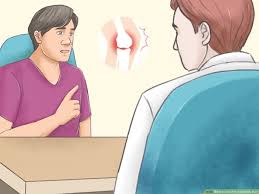5 Natural Remedies for Relieving Arthritis Pain
Arthritis is a common condition that affects millions of people worldwide. It is characterized by inflammation and stiffness in the joints, which can lead to pain and discomfort. While there are various medications available to manage arthritis pain, many people are turning to natural remedies for relief. In this article, we will explore five natural remedies that can help alleviate arthritis pain.
1. Exercise
Regular exercise is essential for managing arthritis pain. It helps to strengthen the muscles around the affected joints, which can reduce pain and improve mobility. Low-impact exercises such as walking, swimming, and cycling are recommended for people with arthritis. These activities are gentle on the joints and can help to improve flexibility and range of motion. It is important to consult with a doctor or physical therapist before starting an exercise routine to ensure that it is safe and suitable for your condition.
2. Hot and Cold Therapy
Applying heat or cold to the affected joints can provide temporary relief from arthritis pain. Heat therapy, such as using a heating pad or taking a warm bath, can help to relax muscles and improve blood flow to the affected area. Cold therapy, on the other hand, can help to reduce inflammation and numb the pain. You can use an ice pack or a bag of frozen vegetables wrapped in a towel for cold therapy. It is important to alternate between hot and cold therapy for maximum benefit.

3. Herbal Supplements
There are several herbal supplements that have been found to be effective in relieving arthritis pain. Turmeric, ginger, and boswellia are some of the most commonly used herbs for arthritis. These herbs have anti-inflammatory properties that can help to reduce pain and stiffness in the joints. However, it is important to consult with a healthcare professional before taking any herbal supplements, as they may interact with other medications or have side effects.
4. Acupuncture
Acupuncture is an ancient Chinese practice that involves inserting thin needles into specific points on the body. It is believed to stimulate the body’s natural pain-relieving chemicals and improve blood flow, which can help to reduce arthritis pain. While there is limited scientific evidence to support the effectiveness of acupuncture for arthritis pain, many people have reported significant improvement in their symptoms after undergoing acupuncture treatment.
5. Mind-Body Techniques
Stress and anxiety can worsen arthritis pain. Mind-body techniques such as meditation, deep breathing, and yoga can help to reduce stress and promote relaxation, which can in turn alleviate arthritis pain. These techniques can also help to improve flexibility and range of motion, making it easier to manage daily activities. It is important to find a qualified instructor and inform them about your condition before starting any mind-body practices.
The Role of Exercise in Managing Arthritis Pain
Arthritis is a common condition that affects millions of people worldwide. It is characterized by inflammation and stiffness in the joints, which can lead to chronic pain and discomfort. While there is no cure for arthritis, there are various ways to manage its symptoms, including medication, lifestyle changes, and exercise. In this article, we will explore the role of exercise in managing arthritis pain and how it can help alleviate symptoms and improve overall quality of life.
Exercise is often overlooked as a form of treatment for arthritis, as many people believe that physical activity can worsen joint pain. However, research has shown that regular exercise can actually help reduce pain and improve joint function in people with arthritis. This is because exercise helps to strengthen the muscles around the affected joints, which can provide support and stability, reducing the strain on the joints themselves.
One of the key benefits of exercise for arthritis pain is its ability to improve flexibility and range of motion. When joints are affected by arthritis, they can become stiff and difficult to move, leading to pain and discomfort. By engaging in regular exercise, such as stretching and low-impact activities like yoga or tai chi, individuals with arthritis can improve their joint flexibility and range of motion, making daily tasks easier and reducing pain.
Arthritis: Joints Inflamation
In addition to improving flexibility, exercise can also help to reduce inflammation in the joints. When we exercise, our bodies release endorphins, which are natural painkillers. These endorphins can help to reduce inflammation and pain in the joints, providing relief for those with arthritis. Furthermore, regular exercise can also help to boost the immune system, which can be beneficial for individuals with autoimmune forms of arthritis, such as rheumatoid arthritis.
Another important aspect of exercise in managing arthritis pain is its impact on weight management. Excess weight can put added strain on the joints, leading to increased pain and discomfort. By engaging in regular physical activity, individuals can maintain a healthy weight, reducing the pressure on their joints and potentially decreasing arthritis pain. Additionally, exercise can also help to improve overall cardiovascular health, which is important for individuals with arthritis, as they are at a higher risk for heart disease.
It is important to note that not all forms of exercise are suitable for individuals with arthritis. High-impact activities, such as running or contact sports, can put too much stress on the joints and may worsen symptoms. Instead, low-impact activities like swimming, cycling, and walking are recommended for those with arthritis. These activities provide cardiovascular benefits without putting excessive strain on the joints.

Doctor Advise on Joint Pains (Arthritis)
It is also essential to consult with a healthcare professional before starting any exercise routine, especially if you have arthritis. They can provide guidance on which exercises are safe and appropriate for your specific condition and may also recommend working with a physical therapist to develop a personalized exercise plan.
In addition to regular physical activity, it is also important to incorporate rest and recovery into an exercise routine. Overexertion can lead to increased pain and inflammation in the joints, so it is crucial to listen to your body and take breaks when needed. It may also be helpful to use heat or ice therapy after exercising to reduce any discomfort or swelling in the joints.
In conclusion, exercise plays a crucial role in managing arthritis pain. It can improve flexibility, reduce inflammation, aid in weight management, and provide overall health benefits for individuals with arthritis. By incorporating regular physical activity into their daily routine, individuals with arthritis can experience a reduction in pain and an improvement in their overall quality of life. Remember to always consult with a healthcare professional before starting any new exercise routine and to listen to your body’s needs to avoid overexertion. With the right approach, exercise can be a powerful tool in managing arthritis pain and promoting overall well-being.

